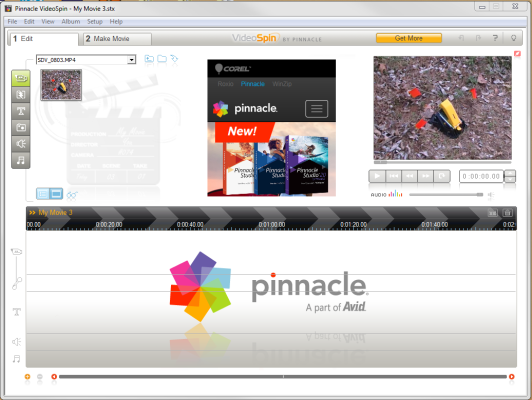Thanks for starting this thread, it might motivate/remind me to finish up some of the tasks I've started.
Back in 2005, I converted/imported all my old VHS and VHS-C home movies into digital format and stored on a hard drive and backed up. At the time, I also saved to DVDs w/o editing, but that's a pain getting into ~ 4.7GB chunks, and I'm not confident of the lifespan of home-burnt DVDs. Fortunately, hard drives are cheaper now, and I can copy unattended to move them to new drives if/when I am concerned about the life on a hard drive. I have about 120GB in this format, unedited, so much of it is boring in retrospect, but you never know - you catch a candid glimpse of someone and it brings back memories.
Then about 2 years ago, I imported all my home movie mini-DV tapes to a hard drive. Ended up with ~ 210GB, plus the previous 120 GB, about 25 hours worth. These were all imported using iMovie, just to get the files, no editing at that point. And every start/stop/pause of the camera created a separate clip - useful for editing, but also a pain in lots of small files to ID.
While hard drives are pretty cheap, backing up 330 GB takes hours, and uses more than half of the common 500 GB drives at the time. I looked into compressing these, and found I could get a LOT of compression, ~ 12:1, w/o any degradation that I could see. After some tests, I settled on 2200kbps video H264 format, with mp3 (MPEG) 192kbps 44.1KHZ sample rate audio, in a 'MKV' 'container' (*.mkv filename). This got over 300 GB of 'raw video' down to ~ 28 GB. I could not detect any loss in quality, even when I tested with lower rates down ~ 1000kbps. I used an open soure Linux program called SELENE as it would batch process a list (other programs required a file-by-file entry, and I had hundreds of files! The conversion took about 2x the play time, so it ran overnight several times to complete.
I think the reason I could compress so much, is that the Mini-DV format was developed in the 90's, so the computing power they could put in a consumer unit that had to run on batteries just couldn't do much calculation in real time, so it was a rather 'raw' format on the tape. Even with a middle-line, multi-core laptop in 2015, running on AC power, the compression ran at about half speed (2 hours to compress 1 hour of video), so way beyond the capabilities of a portable unit of the 90's.
Also, these files will play with most video players, and I know they play with VLC player ( a cross-platform open source media player) on both Mac and Linux, and I assume Windows.
The only downside I can see to this compression is when it comes to editing. The algorithms create a 'key frame', a 'snapshot' of the entire picture, and the flowing frames are encoded with just the differences. When it detects a major scene change, it creates a new 'key frame'. I think there is away to force it to create a key frame every X.X seconds or frames, but I learned of that too late. The editing software I've tried is limited in many ways to only working at the start of a key frame. I think there is a way around this, either better software, or I think I could re-construct the sections I want to edit with more key frames, and then edit it. TBD.
There were also a lot of steps to organize, ID, and relabel, and sort these files into meaningful directories. This would be less of an issue if you did a tape at a time, but I wanted to get them imported before the tapes started giving me read errors.
NEXT STEPS: So I've got 25 hours of video. Now what? I keep procrastinating doing anything, editing sounds like a pain. But maybe this thread will motivate me.
I've toyed with the thought of rather than actual editing these into individual movie clips, I might be able to use a 'play list' for each subject, which would just be a pointer to play excerpts from the files in that order. No messing with the original files then. Need to try this. When I was happy with that, I could delete any unused clips.
The advantage to that process is, I could reuse certain clips in multiple subject 'movies'. For example, I might have a compilation of one child through the years, and another compilation of Birthday Parties. There will be overlap, but I wouldn't need multiple copies of the video file. Make sense?
Probably more than you wanted, but by getting it out there it helps crystallize my thoughts on what I should tackle next. Feedback more than welcome!
PowerPoint?
-ERD50

